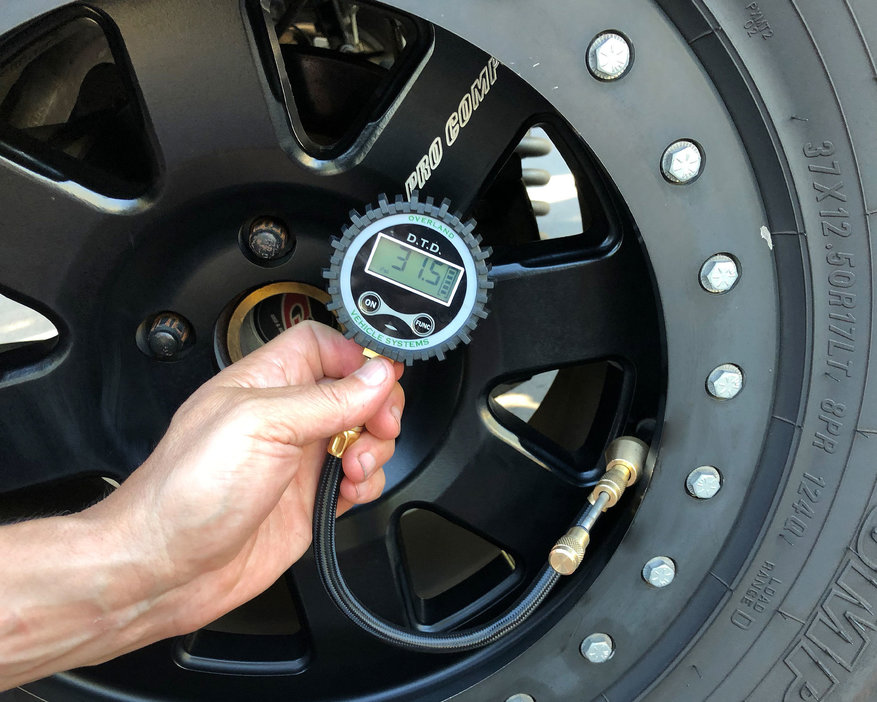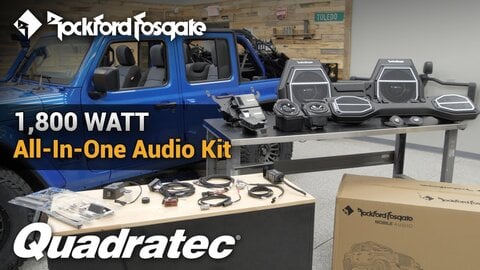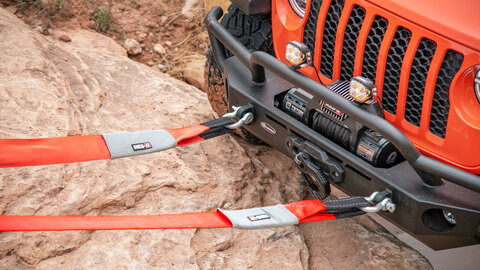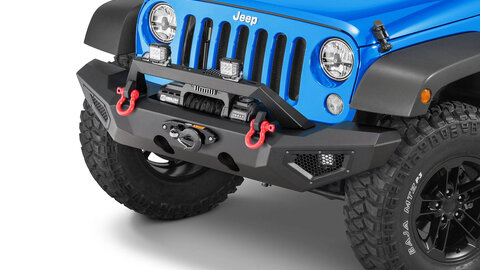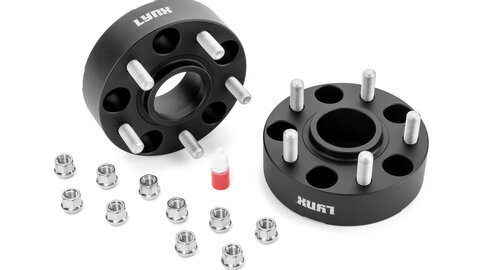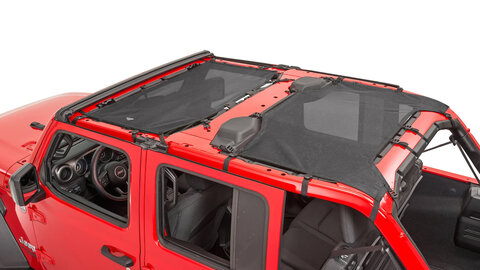by Kyle Buchter
Quadratec Trail Boss
You may think you know. Your friends or people in the local Jeep club may believe they know as well. In fact, sometimes it feels like everyone has an opinion of what works best.
But is it correct?
Well, when it comes to choosing a specific pressure for your Jeep’s tires, there is really no exact, one-size-fits-all, setting. Why is that? Because like a lot of other things about maintaining a Jeep, there are a lot of variables. In this case, stuff like terrain, tire brand, wheel size, tire size, vehicle weight, and even temperature, all matter when selecting the best possible tire pressure.
So let’s break this down.
First, let's look at dealing with tire pressure when you take the vehicle off-road. And yes, you do need to reduce that pressure before you head out on the trail? That’s simply because a flatter tire distributes the load better and allows for better flexibility — which gives you better traction.
This set pressure can vary though depending on off-road conditions and proper management of air pressure is important for the safety of you and your vehicle.
For sand and soft soils, you want a wider tire to essentially float on the surface. However, in muddy conditions, a tall and skinny tire cuts through better. On rocks, a flatter tire grips the best. This is why most tires for on- and off-road are in the middle range for width. They work both ways to accomplish gaining traction but also provide a somewhat safe road mannerism.
When traversing most easy to moderate trails, the reason to air down is to gain a smoother ride. A moderately aired-down tire also works really well on easier to moderate terrain because it absorbs the impact of the rocks and roots while also improving traction. Meanwhile, an extremely aired-down tire grips super well but reduce the vehicle’s handling and usually limits top driving speed to about 10 miles-per-hour.
Keep in mind, any time you air down, you are at risk of harming the tire, wheel, and vehicle. Managing this is key to enjoying your time.
Here are some keys:

Terrain
Terrain determines the pressure from its amount of available traction. For example, in sand the vehicle will dig quickly, thus having a wider tire helps to distribute the load. So, airing down to get a wider and longer tire is very important. However, sand can be various degrees of wet and its consistency stiffens as that moisture increases. The wetter the sand, the less you need to air down.
And what is the correct pressure number? Well, it can depend on your vehicle but somewhere between 15-25 pounds per square inch is the most common range. Keep in mind that beach sand is also different from desert sand.

Tire brand
There are thousands of tire brands and styles out there — from simple street versions all the way to super aggressive mud-terrain types. The compounds used in a tire and the way it is made greatly determine the way a tire reacts to different traction situations.
Some brands work really well in warm and dry conditions, but will not grab at all in muddy, cold climates. There are brands great for rock crawling thanks to thick sidewalls and aggressive tread, but turn down the temperature and add snow, and these just simply won’t get traction because the rubber compound gets too hard.
The thickness of a tire’s sidewall is also a major contributor when it comes to choosing a tire pressure. If you are running an all-season tire, it will most likely have thinner sidewalls, which really does not support the weight of the vehicle like thicker-walled all-terrain or mud-terrain versions. So, you cannot air these down as low as other styles, even with the same size tire, just simply because of the sidewall thickness and the way it holds the weight of the vehicle.
Some tires have such a thick sidewall that you can barely see a bulge in the tire even as low as five psi. And while those tires may be great for dry traction, they are horrible in other conditions. This is also where the load range of a tire comes into play, and a heavier load range is designed for heavier vehicles.

Wheel and Tire Size
If you run 20-inch wheels on 33-inch tires, then the amount of total tire sidewall is 13 inches: 6.5 inches at the top and 6.5 inches at the bottom. Compare this to a 17-inch wheel on that same 33-inch tire and you now have 16 inches of total sidewall with 8 inches at the top and bottom. That is a lot more tire to absorb and flex which helps keep the tire on the wheel better.
Tire and wheel width is important as well, so if you are running a 10.50-inch wide tire with a 10-inch wide wheel, then the tire will not bulge or hold the wheel very well.

Vehicle Weight
Let’s face it — gravity works, and the heavier the vehicle the more downward pressure it exerts. This causes the tires to bulge more. However, a lighter vehicle allows you to let more air out of the tires than a heavier vehicle with the same tire and wheel package. Remember to factor in weight bias from front to rear as well.

Bead Locks
This is a common compensation for mismanagement of air pressure. See, the better your traction, the less need there is for a perfect line when attacking an off-road obstacle.
Better traction comes from lower air pressure, and getting the lowest possible air pressure without worry means adding bead lock wheels. This sandwiches the wheel and tire together to keep them from separating — allowing tire pressures in the single digits.
However, even with this type of set up damage can occur and we have seen rocks dent the center of a wheel through the tire from a combination of too low pressure and aggressively striking rocks. So, realistically, a bead lock wheel is best recommended for extreme types of trails.
_____
Proper management and understanding the environment around you is important when it comes to running the best possible tire pressure. Figuring out the vehicle dynamics, terrain and driving (trail) conditions before you remove that air will allow you to correctly utilize the right pressure.
Someone else’s pressure setup may not be perfect for you. It is not really about the number as much as it is about the bulge in the tire.
A simple technique to get you close is as follows: on easy to moderate terrain figure on airing down to 50 percent of the pressure you run on the road. That most often gives you an amount providing plenty of benefits without a huge risk of problems.
For more extreme terrain, work on dropping that pressure incrementally more than that 50 percent mark to find what is ideal for your current conditions.
Can you start above 50 percent? Absolutely — it is not always required to go as low as possible with your tire pressure. Sometimes having a pressure between 10-15 psi is less is ideal for the day's off-road conditions.
Additionally, always remember to air back up before returning to the road. If you forget when leaving the trail, make sure to stop as soon as possible and refill. Driving on the street or highway for too long at low pressure can damage your tires and affect how your vehicle handles.
One other thing — that pressure listed on the side of your tire is for the maximum weight rating of that tire. This does not mean you should run that pressure on the street. Instead, the best thing you can do is to start with what the manufacturer recommends on that sticker inside your drivers’ door and adjust down from there based on ride quality for larger aftermarket tires.
Whatever you do, just remember there is more to airing down than just going to a number someone else tells you. Take the time to understand your driving conditions and vehicle dynamics, and then dial it in. It will definitely change the way you drive off-road.












